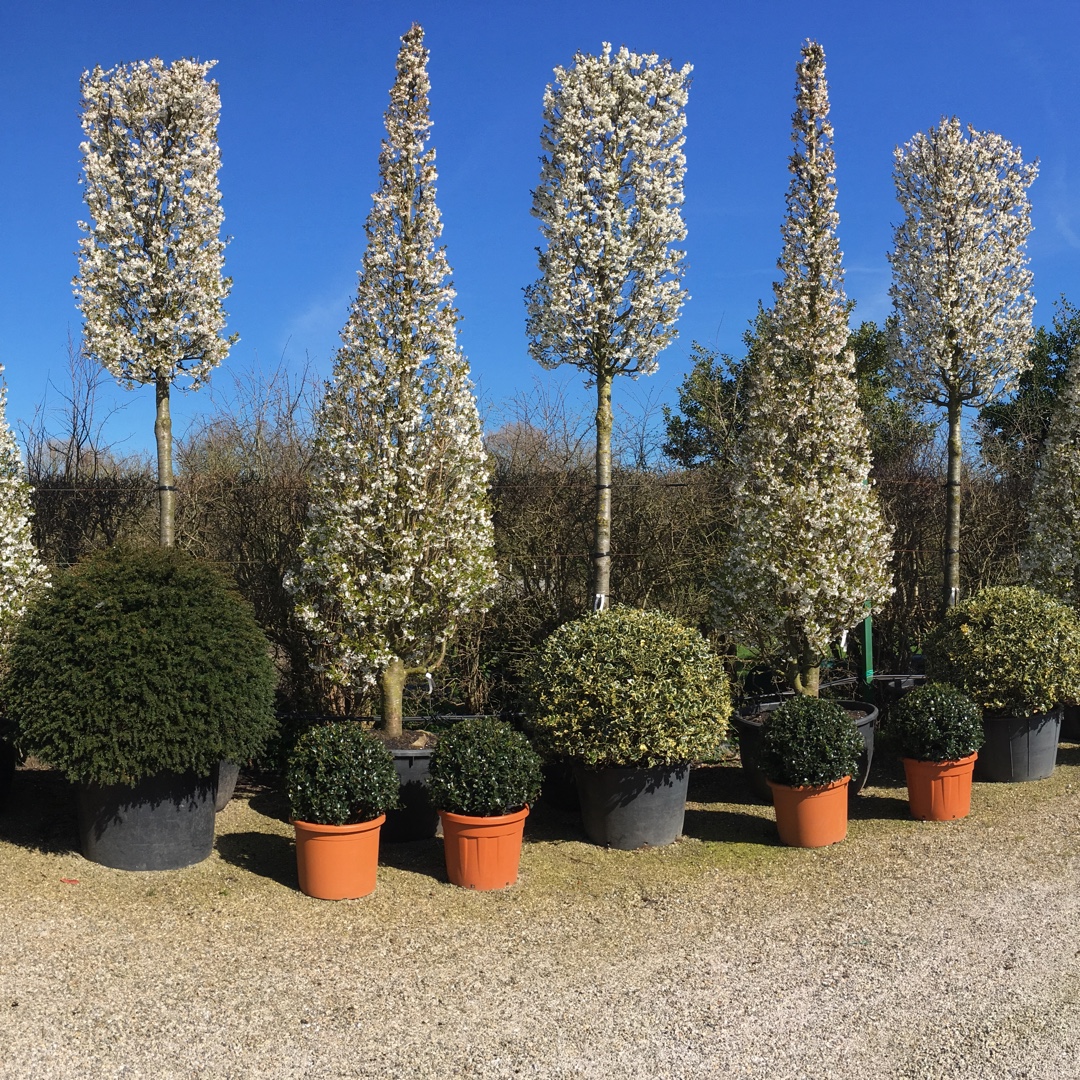
Prunus Umineko
Japanese Cherry
A flowering cherry tree that can grow to large sizes. The name 'Umeniko', which is Japanese for seagull. Pure white blossom cover the tree in mid to late April. The leaves emerge during the flowering giving light green hints in the sea of white. In autumn the tree puts on a fiery display with colours of orange, red and purple
Contributed by @CraigStarkey
-
Full sun
-
Occasional watering
-
Full Frost Hardy: 5F (-15°C)
-
Light and free draining
Common name
Japanese Cherry
Latin name
Prunus Umineko
type
Deciduous trees or shrubs
family
Rosaceae
ph
5.5 - 8.0 Acid - Neutral
Plant & bloom calendar
-
Best time to plant
-
When the plant will bloom
-
When to harvest
full grown dimensions
 8.00 M
8.00 M
8.00 M
8.00 M
Prunus Umineko
A flowering cherry tree that can grow to large sizes. The name 'Umeniko', which is Japanese for seagull. Pure white blossom cover the tree in mid to late April. The leaves emerge during the flowering giving light green hints in the sea of white. In autumn the tree puts on a fiery display with colours of orange, red and purple
Planting
From Early Spring TO Early Spring
Cherries prefer deep, fertile and well-drained soil with pH 6.5-6.7. They dislike shallow, sandy or badly drained soils. Acid cherries tolerate some shade and are suitable as fan-trained trees against north-facing walls or fences, or as open centred bush trees. Best planted in full sunlight.
Flowering
From Early Spring TO Late Spring
Flowering cherries produce their wonderfully abundant display of flowers in Spring
Planting
From Early Spring TO Early Spring
Cherries prefer deep, fertile and well-drained soil with pH 6.5-6.7. They dislike shallow, sandy or badly drained soils. Acid cherries tolerate some shade and are suitable as fan-trained trees against north-facing walls or fences, or as open centred bush trees. Best planted in full sunlight.








